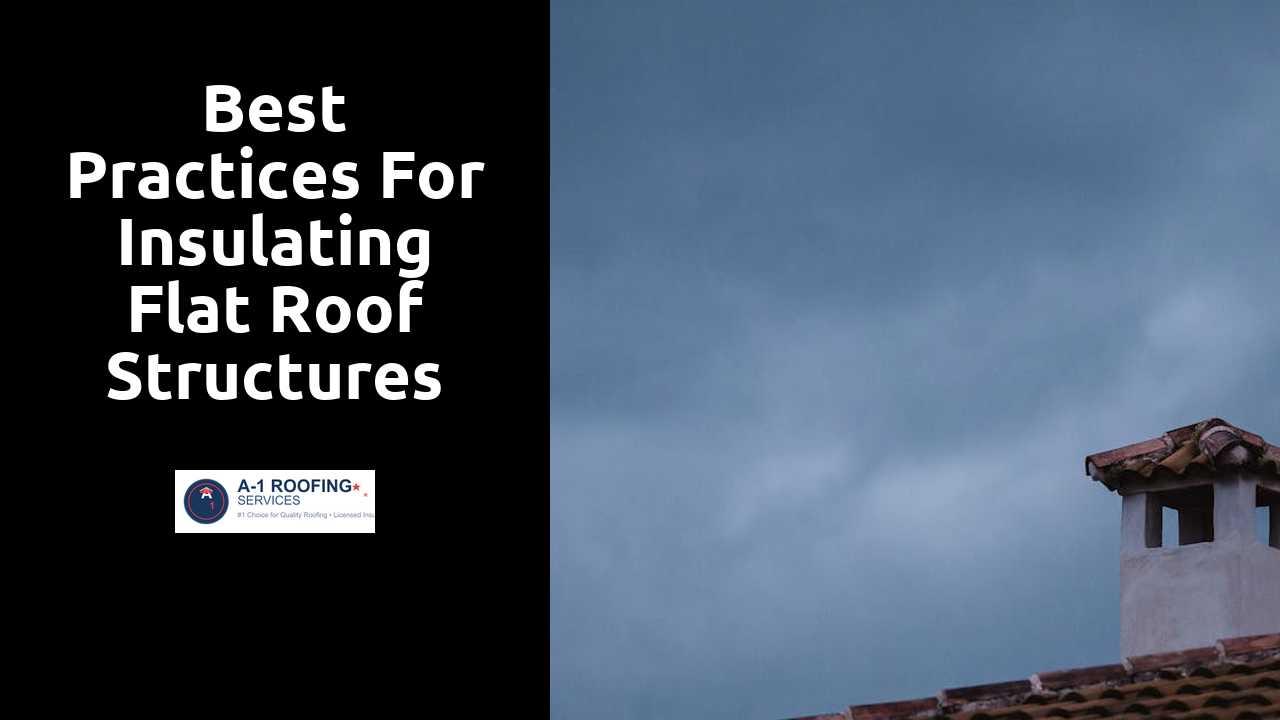
Best Practices for Insulating Flat Roof Structures
Table Of Contents
Maintaining Insulation Effectiveness
Ensuring insulation effectiveness involves regular maintenance and attention to environmental factors. Checking for signs of moisture buildup, cracks, or degradation is essential, as these issues can compromise insulation performance. Routine inspections can identify potential leaks or gaps that allow air leakage, harming the overall energy efficiency of the structure. Ensuring that the insulation remains intact and functional is vital in preventing costly repairs in the future.
The choice of insulation material significantly impacts long-term effectiveness. Various products suit different climates and building designs, making it crucial to select the right type for the specific application. Maintaining cleanliness around insulation areas helps avoid unwanted debris that might influence performance. Proper installation techniques are also necessary, as improper fitting can lead to thermal bridging and resultant energy loss. Regular assessments and proactive measures enable flat roof structures to maintain their insulating integrity over time.
Get more info by visiting this post.
Regular Inspections and Upkeep
Routine inspections are vital for ensuring the integrity of a flat roof's insulation system. These assessments allow property owners to identify potential issues such as moisture accumulation, gaps in insulation, or damage from weather events. Regular checks should include a visual examination of the roofing membrane, looking for signs of wear or deterioration. Paying attention to flashing and drainage areas is equally important, as blockages or leaks in these locations can compromise insulation effectiveness.
Maintaining a schedule for upkeep is essential to prolong the life of both the roof and its insulation. This includes clearing debris, addressing any minor repairs promptly, and ensuring that drainage systems are functioning correctly. Establishing a consistent maintenance routine not only helps prevent significant repairs down the line but also contributes to overall energy efficiency. Regular upkeep can enhance the roof’s performance by keeping insulation materials in optimal condition, ultimately supporting a more comfortable indoor environment.
Benefits of Proper Insulation
Proper insulation in flat roofs significantly impacts energy efficiency by reducing heat loss in winter and keeping structures cool during summer months. This not only helps in maintaining a consistent indoor temperature but also lessens the dependence on heating and cooling systems. Homeowners often notice a reduction in their utility bills as insulation minimizes the workload on HVAC systems, resulting in long-term financial benefits.
In addition to energy savings, effective insulation contributes to enhanced indoor comfort. It helps in minimizing drafts and cold spots, creating a more pleasant living environment. Improved insulation also plays a role in noise reduction, absorbing sound that might otherwise reverberate through a flat roof structure. This multifaceted approach to comfort and efficiency makes investing in high-quality insulation a wise decision for property owners.
Enhancing Comfort and Reducing Energy Costs
Proper insulation in flat roof structures directly influences the overall comfort of a home. Effective insulation minimizes temperature fluctuations, ensuring that living spaces remain warm in winter and cool in summer. This stability creates an environment where residents can enjoy consistent indoor temperatures. Additionally, the reduction of cold drafts and heat loss contributes to a more pleasant atmosphere throughout the year.
In terms of energy efficiency, well-insulated roofs significantly lower heating and cooling costs. Homeowners benefit from reduced reliance on HVAC systems, as insulation prevents conditioned air from escaping. This decreased demand for energy translates to lower utility bills, making it an economical choice for both immediate savings and long-term investment. Prioritizing quality insulation not only enhances comfort but also supports a more sustainable approach to energy consumption.
Climate Considerations
Different climates significantly influence the choice of insulation materials and techniques for flat roofs. In colder regions, insulation must provide excellent thermal resistance to combat heat loss. Materials with higher R-values, such as rigid foam boards or spray foam, help maintain interior warmth and prevent ice dam formation. Regions characterized by extreme heat require reflective or radiant barriers to keep temperatures manageable. Reflective insulation can reduce heat transfer and lead to increased comfort in residential and commercial spaces.
Humidity levels also play a crucial role in insulation effectiveness. Areas with high moisture can lead to mold and mildew growth if insulation materials absorb water. Therefore, choosing moisture-resistant materials is essential for long-term performance. Ventilation strategies should be integrated into the insulation design to mitigate moisture accumulation. This approach not only protects the roof structure but also enhances overall energy efficiency, ensuring durability and comfort throughout the year.
Adapting Insulation Strategies to Different Environments
Different climates demand tailored insulation strategies to ensure optimal performance. In colder regions, materials with high R-values are essential for combating heat loss. Rigid foam boards and spray foam often provide the necessary thermal resistance. Selecting insulation that can withstand moisture is also crucial. Regions with high humidity or precipitation require careful consideration to prevent mold and mildew.
In warmer climates, reflective barrier materials can enhance energy efficiency. These barriers reflect radiant heat away from the roof, which keeps the building cooler. Additionally, lightweight insulation options like cellulose or fiberglass can help manage heat without adding significant weight to the structure. Adapting strategies based on local weather patterns ensures that buildings remain comfortable while minimizing energy costs and environmental impact.
Related Links
Comparing Installation Techniques for Different Flat Roofing MaterialsUnderstanding Drainage Solutions for Flat Roofs